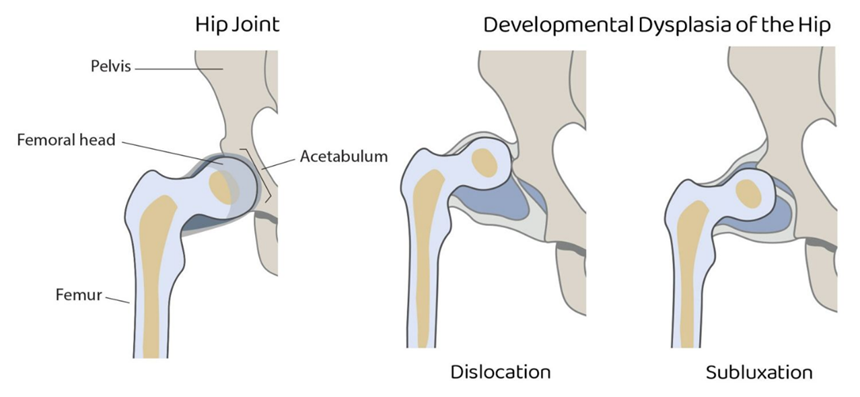Which is a management goal for the care of a 3-year-old child with nephrotic syndrome?
Reduce blood pressure.
Increase excretion of urinary protein.
Increase ability of tissues to retain fluid.
Reduce excretion of urinary protein.
The Correct Answer is D
Choice A reason:
Reducing blood pressure is not a primary management goal for nephrotic syndrome in children. While hypertension can be a complication of nephrotic syndrome, the main focus of treatment is on managing proteinuria, edema, and preventing complications. Blood pressure management may be necessary, but it is not the primary goal.
Choice B reason:
Increasing the excretion of urinary protein is not a desired goal in the management of nephrotic syndrome. In fact, one of the main objectives is to reduce proteinuria (excessive protein in the urine) because it leads to hypoalbuminemia (low levels of albumin in the blood) and edema. Therefore, increasing urinary protein excretion would worsen the condition.
Choice C reason:
Increasing the ability of tissues to retain fluid is not a management goal for nephrotic syndrome. The condition is characterized by edema due to fluid retention, and the goal is to reduce this edema by managing proteinuria and using diuretics if necessary. Therefore, increasing fluid retention would be counterproductive.
Choice D reason:
Reducing the excretion of urinary protein is a primary management goal for nephrotic syndrome1. Proteinuria is a hallmark of the condition, and reducing it helps to alleviate hypoalbuminemia and edema. Treatment often includes corticosteroids to reduce inflammation and protein leakage, as well as other medications to manage symptoms and prevent complications.
Nursing Test Bank
Naxlex Comprehensive Predictor Exams
Related Questions
Correct Answer is C
Explanation
The correct answer is c. Nonsteroidal anti-inflammatory drugs (NSAIDs)
Choice A reason:
Aspirin was once commonly used to treat juvenile idiopathic arthritis (JIA), but it is no longer the first-line treatment due to its potential side effects, such as gastrointestinal issues and Reye’s syndrome in children. While it can still be used in some cases, it is not the preferred initial treatment.
Choice B Reason:
Corticosteroids are effective in reducing inflammation and controlling symptoms of JIA, but they are not typically used as the first-line treatment due to their potential side effects, including weight gain, growth suppression, and increased risk of infections. They are usually reserved for more severe cases or when other treatments have failed.
Choice C Reason:
Nonsteroidal anti-inflammatory drugs (NSAIDs) are usually the first-line treatment for juvenile idiopathic arthritis. They help reduce inflammation, relieve pain, and improve joint function. NSAIDs are generally well-tolerated and have a long track record of safety and effectiveness in managing JIA.
Choice D Reason:
Disease Modifying Anti-Rheumatoid Drugs (DMARDs), such as methotrexate, are used in the treatment of JIA, but they are not typically the first-line treatment. DMARDs are often prescribed when NSAIDs are not sufficient to control the symptoms or when the disease is more severe. They help slow the progression of the disease and prevent joint damage.
Correct Answer is ["A","B","C","E"]
Explanation
The correct answer is a) Positive Ortolani click, b) Unequal gluteal folds, c) Trendelenburg sign, and e) Telescoping of the affected limb.
Choice A reason:
A positive Ortolani click is a clinical manifestation of developmental dysplasia of the hip (DDH). The Ortolani maneuver is used to detect hip dislocation or subluxation in infants. When the hip is abducted and gentle pressure is applied to the proximal thigh from behind, a palpable “clunk” is noticed as the femoral head relocates into the acetabulum. This indicates hip instability, which is a characteristic of DDH.

Choice B reason:
Unequal gluteal folds are another clinical manifestation of DDH. Asymmetrical gluteal creases can suggest hip dysplasia in infants. This is because the dislocation or subluxation of the hip can cause one leg to appear shorter than the other, leading to uneven gluteal folds.
Choice C reason:
The Trendelenburg sign is a clinical test used to assess the integrity and strength of the hip abductor muscles, particularly the gluteus medius and gluteus minimus. A positive Trendelenburg sign usually indicates weakness in these muscles, which can be associated with hip abnormalities such as congenital hip dislocation3. In DDH, the hip instability can lead to a positive Trendelenburg sign.
Choice D reason:
A negative Babinski sign is not a clinical manifestation of DDH. The Babinski reflex is a normal reflex in infants up to 2 years old, where the big toe moves upward and the other toes fan out when the sole of the foot is stroked. A negative Babinski sign would indicate the absence of this reflex, which is not related to DDH.
Choice E reason:
Telescoping of the affected limb is a clinical manifestation of DDH. In a child with DDH, the hip socket is shallow, and the head of the femur may slip in and out, leading to a telescoping effect. This means the femoral head can move further out of the socket, causing the limb to appear shorter or longer depending on the position.
Whether you are a student looking to ace your exams or a practicing nurse seeking to enhance your expertise , our nursing education contents will empower you with the confidence and competence to make a difference in the lives of patients and become a respected leader in the healthcare field.
Visit Naxlex, invest in your future and unlock endless possibilities with our unparalleled nursing education contents today
Report Wrong Answer on the Current Question
Do you disagree with the answer? If yes, what is your expected answer? Explain.
Kindly be descriptive with the issue you are facing.
